My students love graphic literature, whether it is picture books, single-issue comics, or full-length graphic novels. So, with our current unit on Ancient Greece, I decided to switch up from the regular research paper to having students create their own zines on a topic of their choice related to Athens or Sparta.
After establishing foundational knowledge of Greek culture and the differences between Athens and Sparta, the class was divided into two polises. Students selected their topic of interest, formulated research questions (How and Why questions), and researched their topics before starting their zines or short, handmade, comics.
It is essential to establish comics language before students begin storyboarding. There are several ways to build students’ vocabulary. One of my favorite ways is to read Peter and Ernesto: A Tale of Two Sloths by Graham Annable and Tiger vs. Nightmare by Emily Tetri. Key vocabulary includes panels, gutters, captions, dialogue and thought balloons, sounds effects, and motion lines. We talk about the use of color and type, movement of the reader’s eye across a page, and perspective.
Research Organization: Once the students have written their research questions and have started to dig into their research, I wanted to help my students maintain focus on their research question and not get lost in the volume of information available. The benefit of Zines is that by their nature are a short and concise form of writing. Students need to be mindful of what information and images are essential when explaining their topic to their readers.
Here are some of the organizational items that I ask students to do before they start their storyboards.
- Purpose Statement: My Zine will
- I want my readers to know
- My readers should be able to answer the following question/s about my topic:
- Quick Summary:
- Key Ideas That I Want to Include:
- Key Images That I Want to Include:
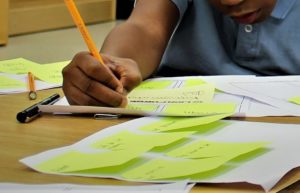 Storyboard: It is crucial that students plan out the pages of their Zines before setting out to draw them. There are a number of ways that students can organize their storyboards. Some students like using index cards or post-its because of the ability to rearrange of throw away unnecessary panels. Other students prefer a fill-in-the-blank template with sections for caption narration, dialogue, and thumbnail images. Other students prefer writing scripts.
Storyboard: It is crucial that students plan out the pages of their Zines before setting out to draw them. There are a number of ways that students can organize their storyboards. Some students like using index cards or post-its because of the ability to rearrange of throw away unnecessary panels. Other students prefer a fill-in-the-blank template with sections for caption narration, dialogue, and thumbnail images. Other students prefer writing scripts.
Below is an example of a fill-in-the-blank template that I have used with great success.
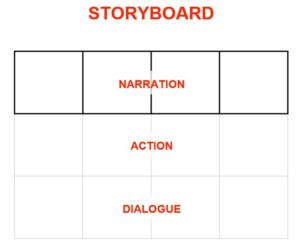
Comics Resources:
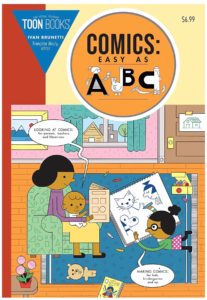
Often students doubt their cartooning abilities and struggle to begin their projects. There are numerous online resources to share. I will also reach out to local cartoonists to see if they would be willing to run a workshop for my kids.
The best print resource I have found so far for working with a wide range of ages is Comics As Easy as ABC: The Essential Guide to Comics for Kids created by Ivan Brunetti, published by TOON Books. Brunetti’s art and instructions are easy to follow and allow students to create a wide range of types of characters, settings, and stories. The book covers everything from character creation to lettering.
 To make the book more user-friendly in my classroom, I bought multiple copies, cut them apart, laminated the pages, and kept them together on a ring. Laminating the pages helps with longevity and minimizes wear and tear. The ability to pull pages for specific tasks allows me the greatest flexibility. Students select the page they need and bring it back to their desks to work.
To make the book more user-friendly in my classroom, I bought multiple copies, cut them apart, laminated the pages, and kept them together on a ring. Laminating the pages helps with longevity and minimizes wear and tear. The ability to pull pages for specific tasks allows me the greatest flexibility. Students select the page they need and bring it back to their desks to work.
Templates: Generous creators share numerous templates and “How to” information online. Because the nature of folds and layout confuse some students who are unable to visualize the final product. It is helpful to have a range of sample layouts and books already folded for students to work with as samples. Sammy Borras created my favorite 8-page template to use with students.
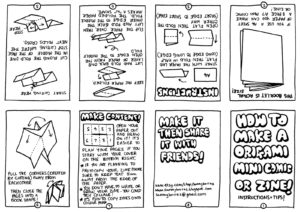
I hope this post inspires you to create zines and minicomics with your students.

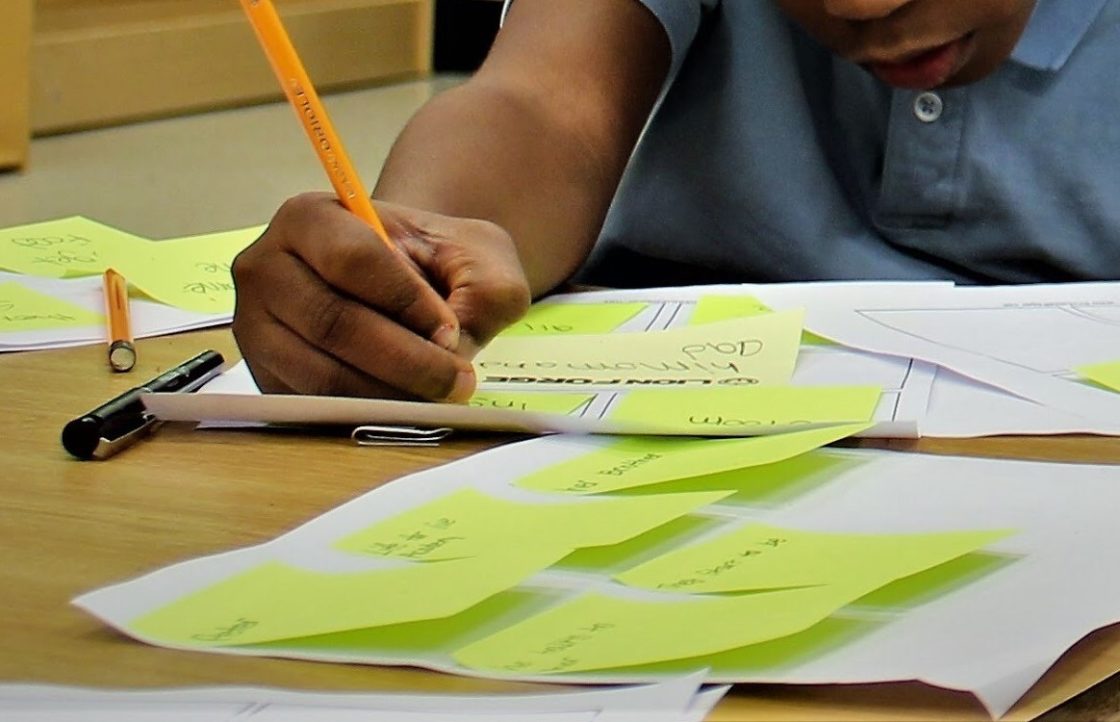
When I worked for MBG, we had one group arrive with those 8-panel zines in hand. Their amazing teacher had led them through a similar research experience prior to the trip in which each student investigated a plant they expected to see in the Climatron. They were to find their chosen plant and sketch it on the cover.
The teacher left a sample copy with me that I kept tacked to my bulletin board for future reference because I thought the concept was so clever and elegant!
What a great way to make research real world! I love the connection to field research for students.